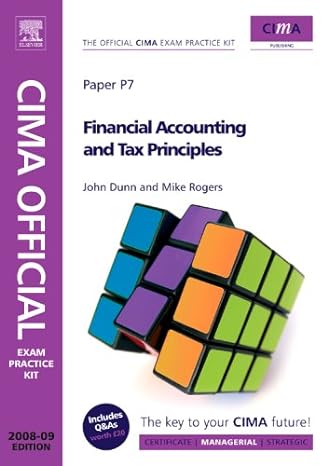Question
Marconi is a Portuguese telecommunications company that encountered problems with its ABC system. The companys production managers felt that 23% of the costs included in
Marconi is a Portuguese telecommunications company that encountered problems with its ABC system. The companys production managers felt that 23% of the costs included in the system were common costs that should not be allocated to products and that allocating these costs to products was not only inaccurate, but also irrelevant to their operational cost reduction efforts.
Throughout the 19th century and most of the 20th century, cost system designs were simple and satisfactory. Typically, either one plant-wide overhead cost pool or a number of departmental overhead cost pools were used to assign overhead costs to products. Then conditions began to change. As a percentage of total cost, direct labor began declining and overhead began increasing. Many tasks previously done by direct laborers were being performed by automated equipmenta component of overhead. Companies began creating new products and services at an ever-accelerating rate that differed in volume, batch size, and complexity. Managing and sustaining this product diversity required investing in many more overhead resources, such as production schedulers and product design engineers that had no obvious connection to direct labor-hours or machine-hours. In this new environment, continuing to rely exclusively on a limited number of overhead cost pools and traditional allocation bases posed the risk that reported unit product costs would be distorted and, therefore, misleading when used for decision-making purposes.
Activity-based costing (ABC) is a costing method that is designed to provide managers with cost information for strategic and other decisions that potentially affect capacity and; therefore, fixed as well as variable costs. Activity-based costing is ordinarily used as a supplement to, rather than as a replacement for, a companys usual costing system (e.g., process costing or job order costing). Most organizations that use activity-based costing have two costing systemsthe official costing system that is used for preparing external financial reports and the activity-based costing system that is used for internal decision-making and for managing activities.
In activity-based costing, an activity is any event that causes the consumption of overhead resources. An activity cost pool is a bucket in which costs are accumulated that relate to a single activity measure in the ABC system. An activity measure is an allocation base in an activity-based costing system. The term cost driver is also used to refer to an activity measure because the activity measure should drive the cost being allocated. The two most common types of activity measures are transaction drivers and duration drivers. Transaction drivers are simple counts of the number of times an activity occurs, such as the number of bills sent out to customers. Duration drivers measure the amount of time required to perform an activity, such as the time spent preparing individual bills for customers. In general, duration drivers are more accurate measures of resource consumption than transaction drivers, but they take more effort to record. For that reason, transaction drivers are often used in practice.
Source:
Garrison, R., Noreen, E., & Brewer, P. (2014). Managerial accounting (15th ed.). Columbus, OH: McGraw-Hill Education.
Unit Learning Outcomes
ULO 2. Compare and contrast activity-based costing (ABC) to other cost allocation methodologies. (CLO 1)
Directions
Initial Posting
Concerns over the application of the ABC approach at Marconi have been raised by personnel, including some of the senior leadership team. It is the opinion of some that this method of cost allocation does not accurately reflect the cost of production and will lead to unnecessary improvements that will ultimately result in the elimination of jobs. As a respected member of the leadership team, the Chief Executive Officer (CEO) has tasked you with investigating the concerns expressed by some of the employee and management officials. You are expected to prepare a position paper either defending the use of the ABC method or recommending an alternative method of cost allocation. In order to formulate your response, you will want to carefully consider the problem, collect relevant data and information, examine the pros and cons of cost allocation models being considered, and document your recommendations using sound arguments that are well supported, properly vetted, and logically presented. It is important that management carefully consider any potential ethical implications associated with their stated position. If there are any potential ethical concerns associated with your position, they should be identified and discussed in the final recommendation should be identified and discussed in the final recommendation.
Step by Step Solution
There are 3 Steps involved in it
Step: 1

Get Instant Access to Expert-Tailored Solutions
See step-by-step solutions with expert insights and AI powered tools for academic success
Step: 2

Step: 3

Ace Your Homework with AI
Get the answers you need in no time with our AI-driven, step-by-step assistance
Get Started


